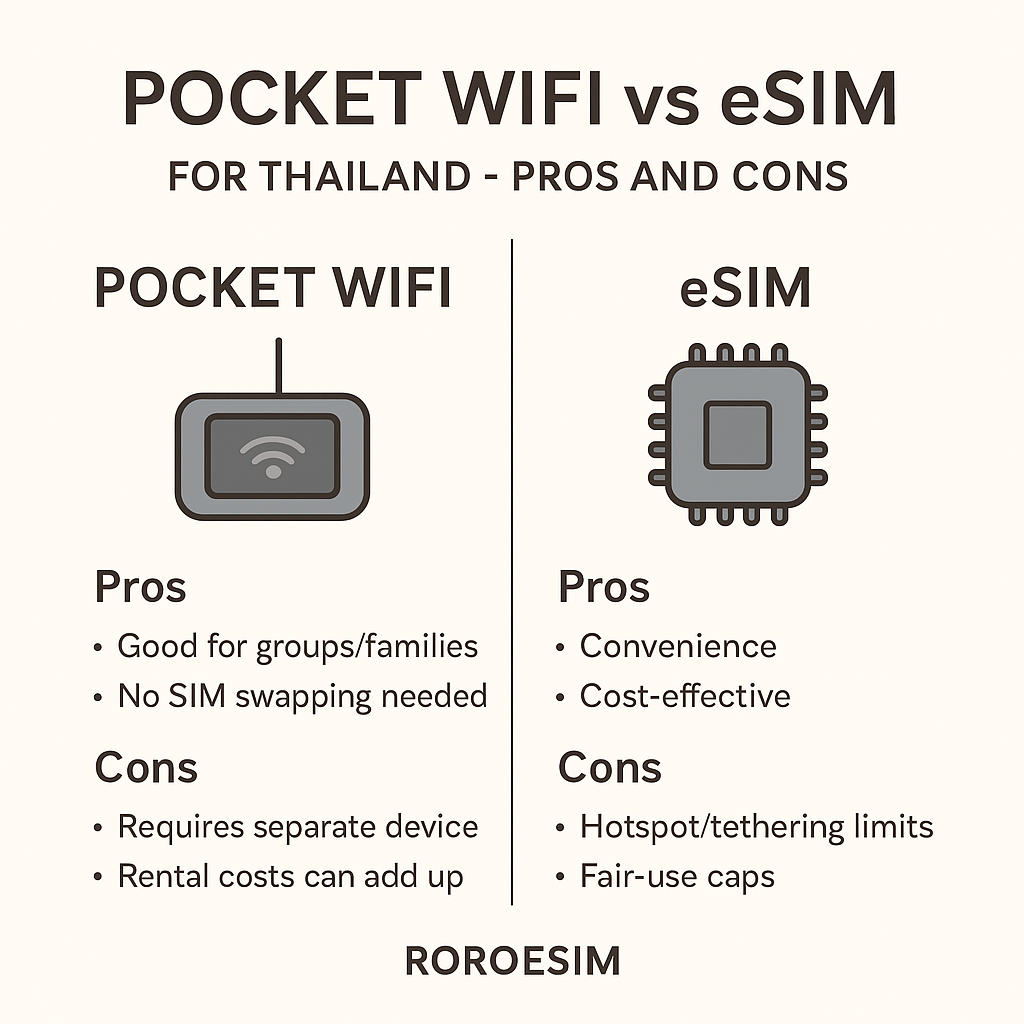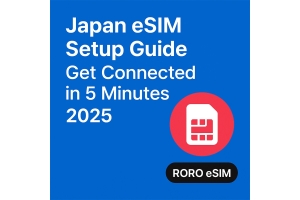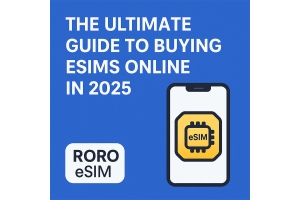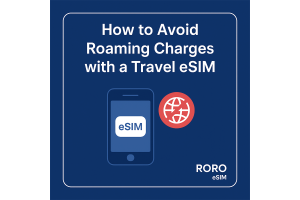
If you’re planning a trip to Thailand, whether it’s bustling Bangkok, relaxing Chiang Mai, or seaside Phuket, staying connected is essential. Two popular options travel-wise are renting a Pocket WiFi router or purchasing an eSIM data plan like RORO eSIM. Here’s how they compare—so you can decide which fits your travel style.
A pocket WiFi router is a portable hotspot device you rent (or buy) in Thailand. You turn it on, and multiple devices (phones, tablets, laptops) connect via WiFi.
Pros:
Ideal for groups or families: several devices can connect simultaneously through one router.
Often has a local SIM inside, giving you full Thai mobile-network connectivity.
No swapping SIMs on your phone—just keep your home SIM active (or eSIM for home) and connect via WiFi.
Good for devices that don’t support eSIM or dual SIM.
Cons:
You have to carry a separate device, keep it charged, and manage it (battery, charger, deposit, return).
Rental cost adds up—daily rental fee, possible deposit, return logistics.
If you lose it or it malfunctions, you may lose connectivity or pay replacement fees.
Bulkier than just using your phone’s data plan.
For solo travelers or those with just one device, it may be less convenient than an eSIM.
An eSIM is a digital SIM profile you download to your compatible smartphone (or tablet). RORO eSIM lists Thailand plans such as: 1 GB/7 days for US $3; unlimited data for 2 days for US $8; unlimited for 30 days for US $68. They list these features for Thailand: coverage via Real Future (Truemove) networks 3G/4G/5G, no ID registration required, hotspot sharing supported (fixed plans can share entire data; unlimited plans hotspot limit 500 MB/day; fair-use policy 3 GB/day high-speed cap).
Convenience: Install ahead of travel—land in Thailand ready to go. RORO emphasises “Install & Activate” process. No extra device: Use your phone for everything—no separate router, charger, deposit.
Flexibility: Wide range of data tiers from light usage to heavy; you can keep your home SIM active while using the eSIM for local data.
Cost-efficient for one device use: The Thailand RORO plans show very low cost for fixed data tiers (US $3 for 1 GB/7 days) for light usage.
Hotspot/tethering limits: On unlimited plans you may only be able to share ~500 MB/day, which may not suffice if sharing hotspot with many devices or doing heavy laptop streaming. Fair-use caps: Even “unlimited” plans have a daily high-speed cap (for RORO their Thailand unlimited plan mentions 3 GB/day high-speed) before speeds are throttled. Device compatibility: Your phone must support eSIM and be unlocked. Older phones or some device models may not. Single-device install: RORO notes that eSIM is installed on one device only; if you change devices you may need to reinstall or switch.
Solo traveler or couple (1–2 devices)
If you’re travelling alone or with one device, an eSIM like RORO’s Thailand plan is likely the better choice—low cost, no extra device, seamless setup. Unless you need to tether multiple devices, you will save money and hassle.
Group/family travel (3 + devices or laptops/tablets)
If multiple people need connectivity or you're using a laptop/tablet regularly and want to share via hotspot, modifying a Pocket WiFi might make sense because one device serves all. Using an eSIM & tethering might hit limits or slow speeds per RORO’s hotspot policy.
Heavy data use / remote areas
If streaming, working remotely, sharing hotspot for several devices, or travelling in less-covered regions, check coverage and plan limitations. RORO’s Thailand coverage uses major local network (Truemove) which is good in urban areas; remote locations may have weaker signals. Pocket WiFi rental gear may have strong local carrier associations too—but still you have to rely on router battery.
For many travellers heading to Thailand in 2025, an eSIM plan from RORO eSIM offers superior convenience and value, especially if you're using one device and want to arrive connected. The low cost plans (e.g., US $3 for 1 GB/7 days) and easy setup make it highly appealing.
However, if you are travelling with multiple devices, want to share connection across many people, or prefer separate hardware to keep your home SIM active or isolate data, then a Pocket WiFi could be better suited—just expect higher cost and more gear to manage.
In short: Go eSIM (RORO) for simple, one-device travel; choose Pocket WiFi if you have multiple devices or travellers and need maximum sharing. Knowing your usage profile and device needs will help you pick wisely—and stay connected effortlessly in Thailand.





